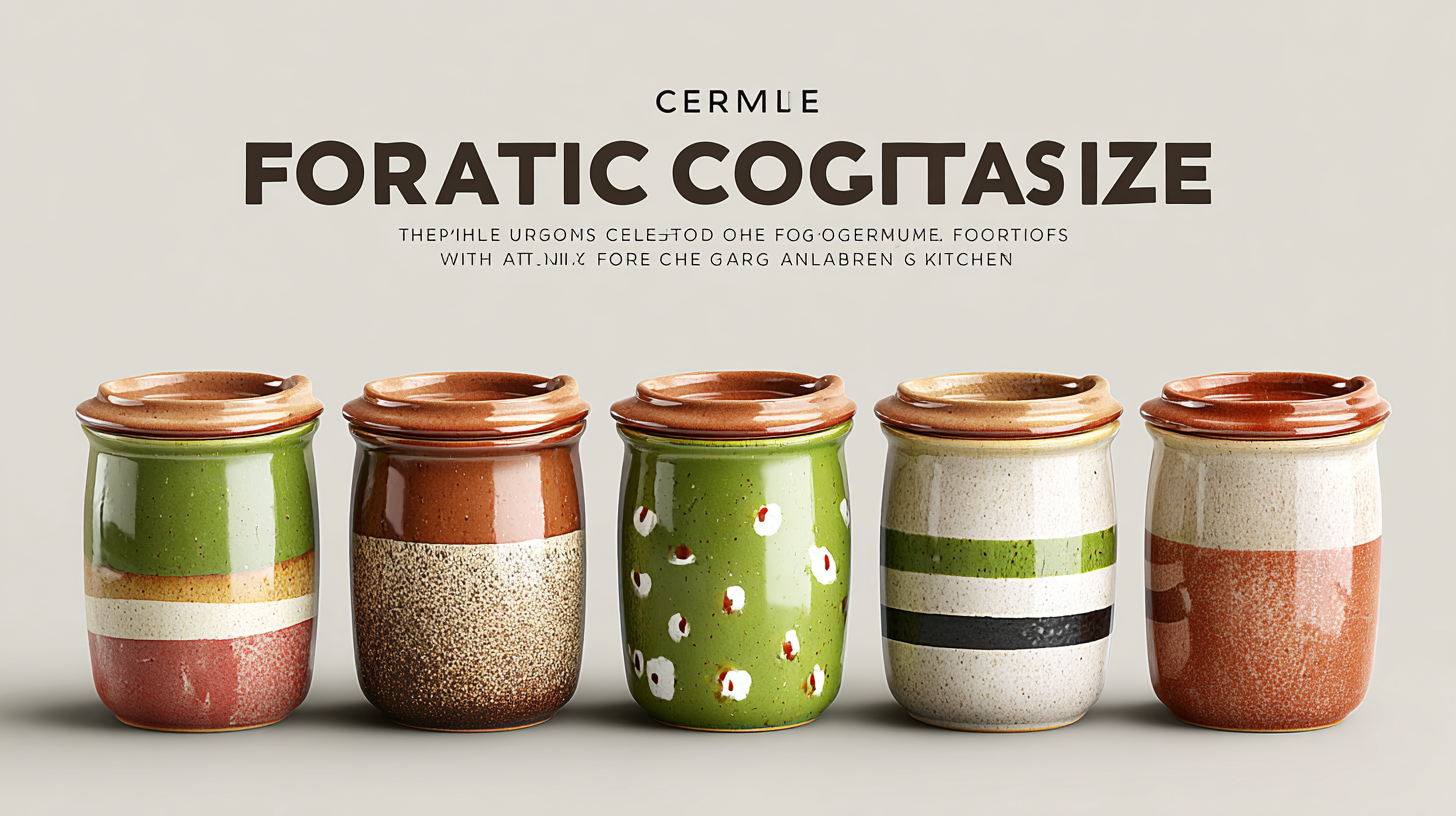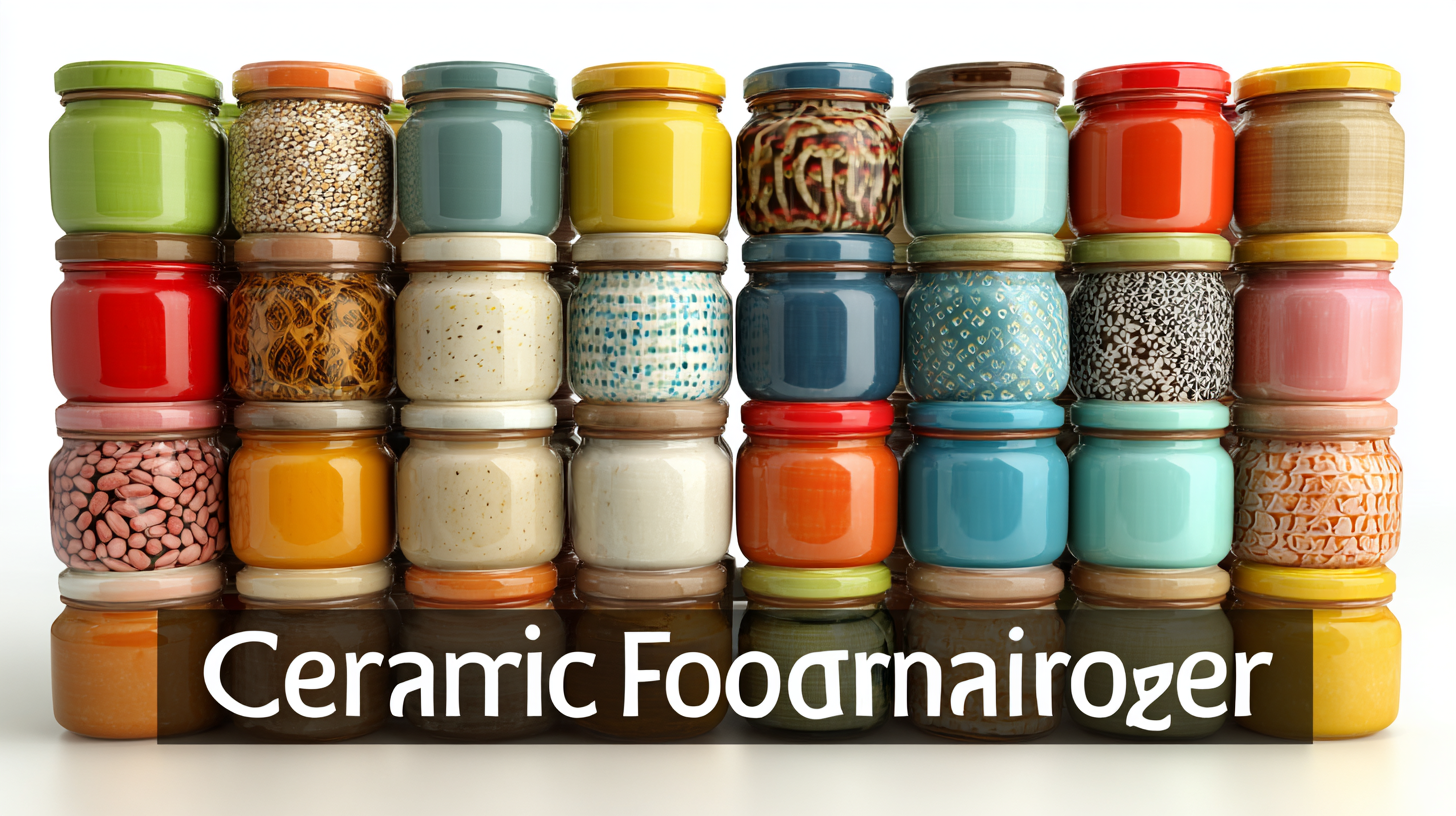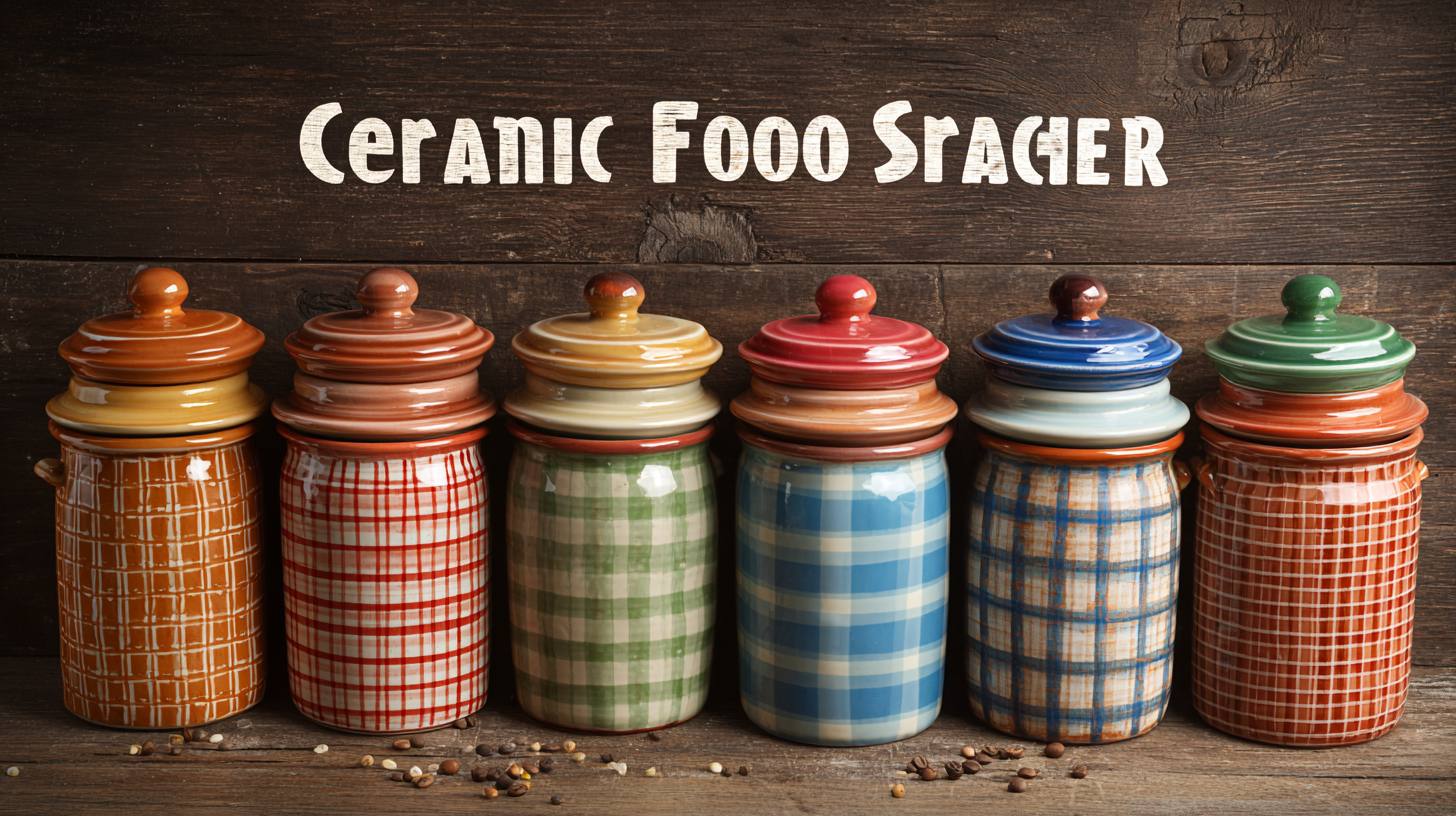

When it comes to ensuring the longevity and freshness of your stored foods, choosing the right containers is paramount. Ceramic food storage containers have gained significant popularity among health-conscious consumers, thanks to their non-toxic nature and superior insulation properties. According to a recent industry report by Grand View Research, the global market for food storage containers is projected to reach USD 11.57 billion by 2025, with ceramic options increasingly favored for their aesthetic appeal and durability. However, not all ceramic containers are created equal, and issues such as glazing practices, lead content, and thermal resistance can pose significant challenges. In this ultimate checklist, we will guide you through critical factors to consider when selecting ceramic food storage containers for your kitchen, ensuring that you make an informed choice that marries both functionality and safety.

When selecting ceramic food storage containers, it’s essential to understand the various types available to ensure they meet your kitchen needs. Ceramic containers come in several styles, including traditional canisters, nesting sets, and specialty containers with lids designed for specific products like grains or leftovers. According to a recent industry report by Mordor Intelligence, the global ceramic container market is expected to grow at a CAGR of 5% over the next five years, driven by rising demand for eco-friendly and sustainable kitchen solutions.
In addition to style, the functionality of ceramic food storage containers is critical. For instance, some models are designed to be microwave and dishwasher safe, providing convenience for busy households. The National Association of Home Builders (NAHB) has reported that over 60% of homeowners prefer materials that are not only aesthetically pleasing but also practical for everyday use. With a variety of sizes and shapes available, such as stackable options for space-saving, understanding these differences can significantly influence the efficiency of your kitchen organization and food preservation practices.
When choosing ceramic food storage containers for your kitchen, it’s essential to understand the key features and benefits that set them apart from other storage solutions. Ceramic containers are praised for their non-reactive properties, ensuring that your food remains fresh and free from contaminants. Unlike plastic options, ceramic does not leach harmful chemicals when exposed to heat, making them a safer choice for long-term food storage.
One of the most significant advantages of ceramic storage solutions is their durability. According to industry reports, ceramic containers can last much longer than their plastic counterparts, which often degrade over time. This longevity not only reduces waste but also offers excellent value for your investment. Moreover, many ceramic storage options today are designed with stylish aesthetics, contributing to your kitchen's decor while providing functional storage. As the market trends highlight, the growing emphasis on clean cooking technologies and materials in households aligns perfectly with the benefits offered by ceramic storage solutions, making them an ideal option for health-conscious consumers.
In addition, the versatility of ceramic containers makes them suitable for various kitchen applications. Whether it's for storing leftovers, meal prepping, or even baking, these containers perform exceptionally under different conditions. Such multifunctionality can be particularly beneficial in smaller kitchen spaces, where each item needs to serve multiple roles, thus enhancing your kitchen's overall efficiency.

When selecting ceramic food storage containers for your kitchen, size and capacity are critical factors to consider. According to a recent report from the Food Storage Container Association, over 60% of consumers prioritize size compatibility with their kitchen storage solutions. This statistic underscores the importance of measuring both your storage space and the items you intend to store. Whether you’re looking to preserve leftovers, store bulk ingredients, or organize meal prep, understanding your needs ensures that your containers will be functional and efficient.
Additionally, the optimal capacity of food storage containers plays a significant role in reducing food waste. The USDA reports that around 30-40% of the food supply in the U.S. is wasted, often due to improper storage methods. Selecting containers with ideal capacities tailored to your typical portion sizes can help mitigate this waste. For instance, medium-sized containers (ranging from 1 to 3 quarts) are versatile for everyday use, while larger containers (4 quarts and above) are suitable for bulk storage. Assessing your typical usage patterns will help you choose containers that not only fit your kitchen space but also support sustainable food practices.

When selecting the ideal ceramic food storage containers, it's crucial to consider several key factors to ensure effective food preservation. According to a report from the Food Packaging Association, approximately 74% of consumers prioritize materials that can maintain food freshness and flavor. Ceramic containers excel in this area due to their natural non-porous quality, which helps to prevent moisture absorption and odor retention. This ensures that your meals not only stay fresher for longer but also maintain their original taste.
Additionally, the durability of ceramic makes it a smart choice for food storage. Research indicates that ceramic containers can withstand higher temperatures compared to plastic options, making them suitable for both the oven and microwave without the risk of chemical leaching. Data from the Ceramic Industry highlights that food in ceramic containers can last up to 50% longer than those stored in plastic, significantly reducing food waste and promoting sustainability in your kitchen. By focusing on high-quality, well-designed ceramic containers, you can enhance not only the longevity of your food but also your overall culinary experience.
When it comes to maintaining and caring for your ceramic food storage containers, a few best practices can help prolong their life and ensure your food stays fresh. First, always allow your containers to cool down to room temperature before washing them. Sudden temperature changes can lead to cracks or chips. Use warm soapy water and a soft sponge for cleaning; avoid abrasive materials that can scratch the surface. If you encounter stubborn stains, a mixture of baking soda and water can effectively restore the container without damaging it.
Furthermore, proper storage will keep your ceramic containers in top condition. Avoid stacking them without protection, as this can lead to unintentional damage. Instead, consider using cloth or paper towels between each container. When not in use, keep them in a dry, cool place to prevent humidity from affecting their integrity. Finally, if your ceramic containers come with lids, make sure to store them separately to avoid any risk of chipping or breaking. Following these best practices will ensure your ceramic food storage containers remain a reliable staple in your kitchen for years to come.
| Feature | Description | Maintenance Tips |
|---|---|---|
| Material Quality | Look for high-quality ceramic that is chip-resistant and durable. | Avoid sudden temperature changes to prevent cracking. |
| Lid Type | Choose between airtight lids or easy-access lids depending on your needs. | Regularly check seals and replace if damaged. |
| Size and Shape | Consider what you will store; opt for various sizes and shapes for versatility. | Stack containers to save space and organize better. |
| Microwave and Oven Safety | Some ceramics are microwave and oven-safe; check labels carefully. | Use only as directed; avoid extreme heat changes. |
| Design | Select a design that complements your kitchen decor. | Keep surfaces clean to prevent any stains from building up. |
| Price | Budget-friendly options are available, but investing in quality may save money long-term. | Consider cost-per-use; higher quality may lead to less frequent replacements. |
